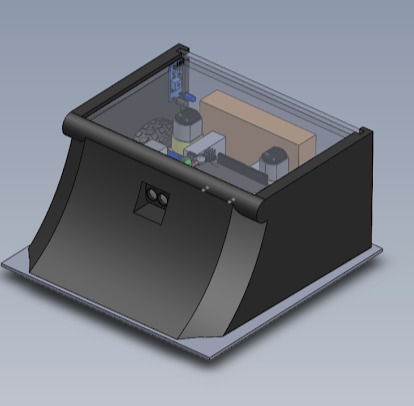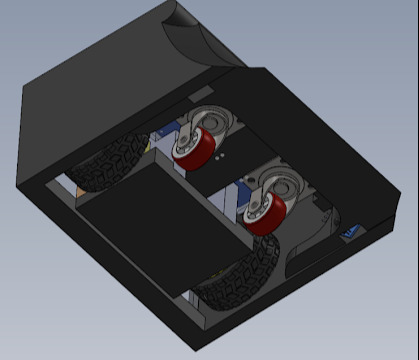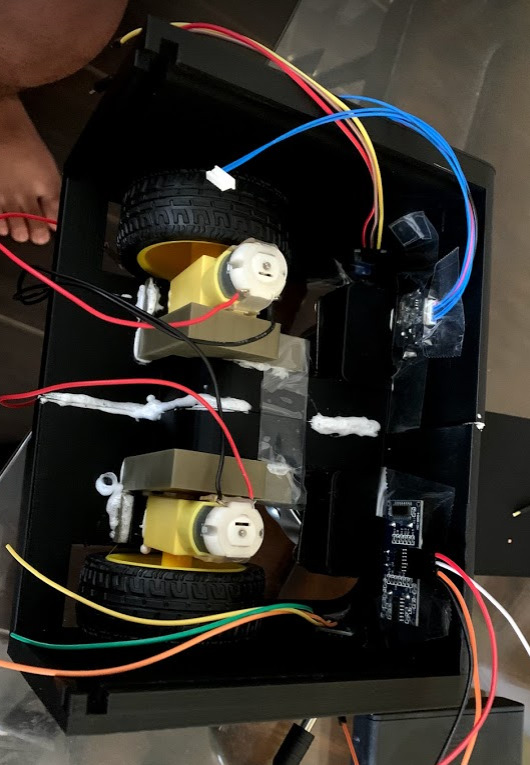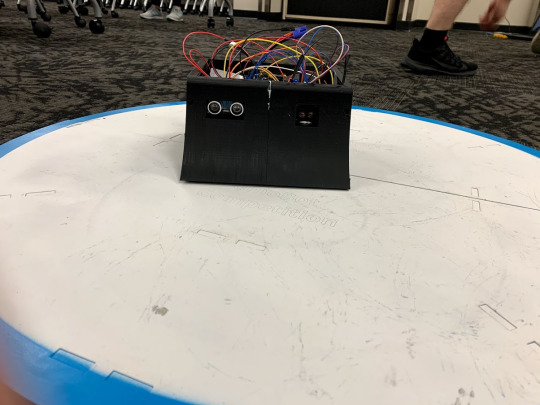Welcome to my collection of past and present projects! You will see my love for math, physics, and creating.
Don't wanna be here? Send us removal request.
Text
Physics I Learning Assistant at UCF
January 2023 - May 2023
I accepted a position for the spring semester at UCF to assist with a a physics 1 with calculus studio class. The class has the lecture and lab integrated into one environment and time schedule; this allows the students to directly connect the information without a gap between. My responsibility focuses on helping any groups that are stuck on how to proceed or any understanding issue during the class. I also host physics help room hours twice a week; here, students from any physics class can come for help or to study and review. There is also a weekly pedagogy to ensure I’m learning good teaching practices.
I think this will help my future in research when I teach since I’ll have a bit of experience, it won’t be too foreign to me.
0 notes
Text
Python in Classical Mechanics
August 2022 - December 2022
I learned some basic python in UCF’s fall 2022 classical mechanics course. We used Python to numerically solve physics problems with calculus and differential equations. I enjoyed learning a new programming language, Python is definitely my new favorite as far as syntax goes.
In the course, we had one relevant coding homework problem per chapter in Taylor’s Classical Mechanics. We also had 2 projects; the projects required videos with the first project being free-choice on any problem in Taylor’s book and the second problem gave you choice to investigate a three-body-problem or a chaotic damped pendulum as described in Taylor’s chapter 12.
Project 1:
ColabNotebook: https://colab.research.google.com/drive/1oorF7lG4VvzMx6TA7ft9gOgKG0uNv-3T?usp=sharing
Video Explanation:
youtube
Project 2:
ColabNotebook: https://colab.research.google.com/drive/1P5HCUT5l70Ie1FhJjPBV1dbMlR_yedBa?usp=sharing
Video Explanation:
youtube
0 notes
Text
Undergraduate Research Assistant at LUMAS at UCF
September 2022 - current
Laboratory for Ultrafast Metrology and Attoscience in Solids (LUMAS)
I moved over to the LUMAS lab from the Vasu Lab due to LUMAS being more aligned with my future goals. LUMAS has a focus on Atomic, Molecular, and Optical Physics analysis and control on solids on the atto-/femtosecond time scale. Fall ‘22 I started in the lab with a small project aimed towards giving me a lot of overall knowledge of the labs operations, experiments, methods, etc; essentially giving me a chance me to get comfortable with the optics and lasers being used. The project is an interferometer locking breadboard utilizing a piezoelectric translation stage and a feedback control loop enabled through LabVIEW to enable high stability in the optical beam path.
0 notes
Text
SPIE: Defense and Commerical Sensing 2022
May 2022
Conference Proceeding presented and published
I had the opportunity to write about my research work at Vasu Lab for the aerospace early-fire detection MIR optical sensor. This allowed me to formalize my work and data for the project. My fellow co-workers on separate subsystems also published their work. An additional update paper should be written and presented at SciTech 2023.
Our work can be found at: https://doi.org/10.1117/12.261890 http://dx.doi.org/10.1117/12.2618906 http://dx.doi.org/10.1117/12.2618865 http://dx.doi.org/10.1117/12.2618935 http://dx.doi.org/10.1117/12.2618882
0 notes
Text
UCF’s Advancement Placement Program: Pre-Grad Knights (AAP-PGK)
October 2021 - current
Being a first-generation student, I really had no idea how academia worked. PGK was so beneficial to me because it gave me steps on how to prepare myself as an ideal candidate, how to find/schools I want, and even how to organize myself to apply properly. The program really assisted me in preparing for the SPIE 2022 conference and my applications for summer ‘23 REUs. Next year when I do apply to grad schools, PGKs will still be there to help me through the process.
0 notes
Text
Treasurer - ASME at UCF ‘21-’22
May 2021-2022
Excited to announce: I’m the treasurer for my favorite club at UCF, American Society of Mechanical Engineers. I was a very active member for the ‘20-’21 school year, participated in almost every project and GBM. I’m looking forward to getting more involved, volunteering, planning, and my personal goal of getting more diversity in the club.
Club website: https://www.asmeatucf.com/

0 notes
Text
Arduino Measuring Devices
July 2021 - Summer Semester
In UCF’s Mechanical and Aerospace Measurements (EAS 3800C/EML3303C) course, my group effectively build three measurement systems using Arduino. Together, we followed circuit diagrams and adjusted given code to properly develop a water depth, distance, and temperature sensors with either a servo motor or LCD screen to display the output. After building the devices, we tested and calibrated when needed. See our final report for details.
This course integrated previous engineering knowledge with real-life testing situations, like beam deflection and sound waves. It also gave me an insight on future engineering concepts, such as fluid dynamics and vibration and controls. I was made familiar to LabVIEW’s VI simulations and MS Excel. During the course, we made multiple lab reports which assisted in strengthening my technical writing skills and communicating concepts.
For this project, our group worked together and communicated excellently which was the backbone of us staying on track. My primary focus was building the devices and testing. I was able to enhance my electronics and coding knowledge while being in a collaborative setting. The technical writing skills and formatting of a report will be very beneficial moving forward in my career.
Final Report: https://drive.google.com/file/d/1NosDFnuBYhkp918xvozPUoAbZ-W0wak7/view?usp=sharing
Final Presentation Video: https://youtu.be/ok_ofy84Gzg
UltraSonic Sensor Testing:

Water Depth Sensor Testing:

Temperature Sensor:

0 notes
Text
ASME Sumobot Competition
February 12, 2021- April 2021
In a team of 4, we manufactured a Sumobot that competed against our peers. We used a LiDAR, UltraSonic, and 2 IR sensors, and an Arduino board to make it fully autonomous. Our Sumobot won the competition, proving to be durable and fast.
See the competition guidelines at: https://www.asmeatucf.com/sumobot-competition-2021.html
We began design stages virtually, with CAD and electronic ideas. Together we decided components and principles we wanted to use. Our chassis had a very small clearance with the ground, attempting to inhibit a competitor to flip us/gain an advantage by being underneath us. We used the largest size dimensions and centered our weight close to ground; big and heavy but not top heavy - harder to flip. The use of castor wheels assisted our bot in spontaneously changing direction. We wanted our bot to be as smart as possible so we used 3 different sensors. This did make coding more challenging and time consuming with calibrations and debugging. We created two slots for the back wall and lid for easy access to the electronics. The lid printed too large, without enough time we made a duct tape lid which was not efficient.
Future improvements: more secure mounting of sensors, more organized wiring, a 3D printed lid. All of these improvements amount to more time allocated for manufacturing.
CAD Designs:


Sumobot Manufacturing:



ArduinoCode: https://docs.google.com/document/d/1x7vD7tXJavo7JQ1WZeI2aAJNwLLkH46X4ghNs_RfMPw/edit?usp=sharing
0 notes
Text
Undergraduate Research Assistant at Vasu Lab UCF
February 2021 - October 2022
Aerospace Hardware Development
Worked with a team of Undergraduate Research Assistants to produce a device prototype that acts as a cost-effective early fire detection system which utilized LEDs as opposed to the standard laser; this LED spectroscopy is desirable for power, cost, and lifetime effects. My primary focus was on electronic design/manufacturing and coding a microcontroller. A conference proceeding was published that reviews my progress on the prototype, at SPIE 2022. "Embedded systems development for spacecraft fire detection MIR optical sensor"
Summer 2022: I was able to focus on this project as I wasn’tt aking summer classes. I completed 95% of the microcontroller programmer and, with the help of a coworker, finalized and assembled the PCB stack. I also got the opportunity to use a lathe (under the direct supervisor of my PostDoc) to machine the heatsink for the photodiode (6061 aluminum).




0 notes
Text
ASME Innovative Additive Manufacturing 3D (IAM3D™) Unmanned Aerial Racing Cargo Vehicle (UARCV)
Oct 2020 - March 2021
In a team of 5 with UCF’s ASME chapter, we worked together to engineer a drone. This project was very exciting with many moving parts. I was part of the electronics/flight team.
Our team consists of 4 mechanical engineering and 1 computer science majors; freshman, sophomore and juniors at UCF.
The drone had many restrictions on the build and the abilities it must exhibit. In summary, the drone must be able to fly for a total of 15 minutes while picking up and dropping a payload 5 times at specific points on a course.
See the competition guidelines at: https://efests.asme.org/competitions/asme-innovative-additive-manufacturing-3d-challeng
I have learned quite a bit dealing with the electronics of a drone. We researched all our components. We based our decisions on weight/size, compatibility between parts, highest necessary quality with budget. We had to overcome COVID-19 stocking, shipping, and social distancing issues. I worked with my team to solder and assemble the electronics as well as the chassis.
Our deadline was shortened by more than a month in late January. The competition was also moved virtual, which meant we built a course and filmed our flight.
Results: our drone was tough and survived many crashes with minimal breaks. Our main breaks were the arms and propellers, the rest remained safe. Our payload mechanism did not operate as expected; if we were given more time, we could have printed a functional complaint mechanism. The dimensions were too small to effectively pick up a cube while flying.
Flight Test 1: https://photos.app.goo.gl/mpW3oALN7BZ4Ccc1A
Flight Test 2: https://photos.app.goo.gl/F7fAoNZGzk1cTRwu7
Final submission: https://photos.app.goo.gl/vq7kSN8LAUR5pUxm9
Assembly photos:





0 notes
Text
Ender 3 Pro - 3D Printer
I received my first 3D printer and have been enjoying learning how to use it! I am trying to hone my CAD skills by physically seeing what I am designing. My goal is get a CSWA.
I mainly use Solidworks to design and Cura to slice. I have picked up Fusion360 with my teamwork.
As I get more skilled at CAD, I would like to start selling my own designs as a side business.
2 notes
·
View notes
Text
SIMIODE SCUDEM Fall 2020
October 23-November 14, 2020
In a team of 3, we attempted to model a spinning wheel with differential equations. See attached YouTube link for our final presentation and models.
This project was completed 100% virtually. Honestly, my favorite part was how well our team worked together with the given circumstances. Applying concepts and equations I have learned in class over all the years was also a highlight of my experience.
See our presentation at: https://youtu.be/HhLaWQGNFOY
See the competition constraints at: https://www.simiode.org/scudem/2020


0 notes
Text
ASME 3D Bridge Competition
October 8-20 2020
We designed a simple bridge with restrictions on scale and dimensions with a goal of the least amount of volume yet is the strongest in a competition.
As a team of 3, we designed a simple bridge with restrictions on scale and dimensions with a goal of the least amount of volume yet is the strongest in a competition. We used FUSION360 to communicate ideas efficiently.
This competition was my first at UCF and in a virtual environment. The experience was definitely different but some parts was made easier due to the virtual aspect. Our team worked well together designing and cading this project with FUSION360. If we received a chance to enhance our design, I believe we would improve together significantly.


It was tested using this jack:

0 notes
Text
Creation of Program to Calculate Hotel Rate
April 2018 at Best Western, I used C++ to create a program that would calculate the base rate for a package.
The purpose was to make the hotel auditors’ job more efficient by only needing to enter values given on the PMS, instead of manually calculating.
{ int i; for (i = 0; i < 20; i++) //loops 20 times {
float n; float scp; std:: cout<< fixed; std:: cout<< setprecision(2); //previous 2 lines rounds demical to 2 places cout << “Enter the combined room rate plus tax for DY reservations \n”; cin >> n; scp = (n - 16) / 1.12; //computes the SCP total cout << “This is the new room rate\n”<< scp << “\nEnter this rate in rate detail.\n”; cout << “Select SCP under the multiple tap.\n\n” ;
//made by ck 106 for Best Western Cocoa Beach }
}
1 note
·
View note
Text
Creation of Hospitality Training Guide
I spent the pandemic’s downtime creating an employee onboarding guide for the Best Western, Cocoa Beach.
April 2020 - taking advantage of the downtime due to Coronavirus, I took initiative to create a manual on all front desk operations: ideally a guide for trainers to efficiently onboard a new employee and ensure they are trained without gaps. This guide is printed in a binder with digital copies on Google Docs. Let me know if you’d like to see more!

1 note
·
View note
Text
Creation of Rocket Launch Flyers
In an effort to keep our hotel guests informed, I continuously create flyers with relevant information on Rocket Launches.
Starting around March 2018, I began creating rocket launch flyers to advertise the next launch. I went through various layout versions - we are currently using one large flyer in a frame with a holder for smaller flyers for the guests to take with them. I usually gather the information from various websites, including SpaceFlightNow.com and Launch360.Space


1 note
·
View note
Text
How to Drift Presentation
February 2018 in my Speech course at EFSC - I created and presented “How to Drift your Car”.
Fueled by my love of math and cars, I calculated the minimum speed in which to drift around a corner in our town (assuming no drag and average tires). I then taught the class how to do their own calculations. The majority of the reactions were that I made it so easy they felt they could compute the calculus on their own!
See attached Google Slides to view my presentation.
https://docs.google.com/presentation/d/1xicAXpQsdiPDjDk23MyvoDY9xjS5oGB-WvpH4L-fABI/edit?usp=sharing
0 notes